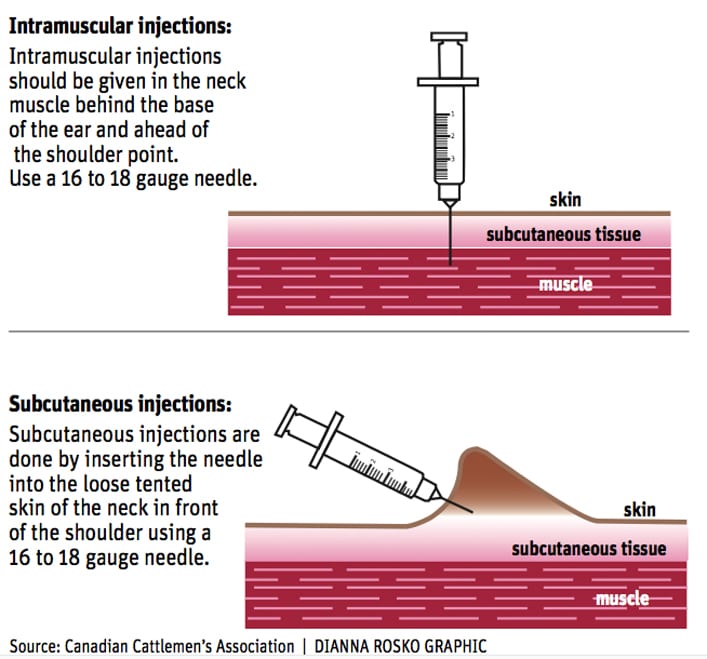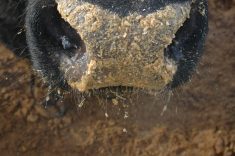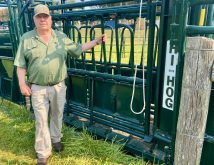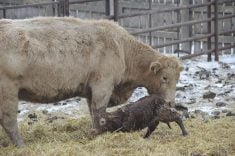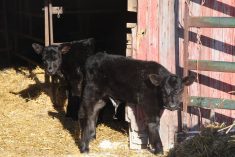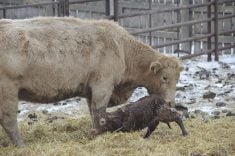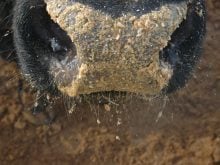Injection procedures:
The most recent western Canadian cow calf survey found that 95 percent of producers vaccinate their cattle, a slight improvement from the 2014 survey.
The most common vaccination is a clostridial seven-, eight- or nine-way product, and the second most common is protection against respiratory disease.
However, vaccines often require a booster, said veterinarian Roy Lewis.
“We forget after vaccination that we have to booster them,” he said.
Blackleg requires more than one shot and all herd members should be treated.
“That is a common thing that we forget about, and I always go back to that valuable purebred bull,” he said.
Read Also

Crop quality looks good this year across Prairies
Crop quality looks real good this year, with the exception of durum.
“They are the ones that are forgotten about because they are harder to handle.”
At semen testing time, consider giving bulls a vaccine booster. For those who castrate older bull calves, a tetanus shot is also needed.
Vaccines are made up of two parts: an antigen, which is a substance capable of creating an immune response, and an adjuvant, which is a compound that improves the efficacy of the vaccine.
Proper administration of vaccines is important to get the best protection.
“You pay good money for the vaccines. You want to make sure they are getting used properly,” said Lewis.
He recommended intramuscular or subcutaneous injections in the neck area.
“The neck is the easiest place to place them. If you put it under the skin it will be absorbed and will work quite well.”
He also suggested labelling syringes so vaccines are not mixed together. For example, clostridial vaccines contain formalin, which kills modified live vaccines.
Antibiotic residues in syringes can deactivate vaccines. Soap and disinfectant residues can also be a problem.
Mixed modified live vaccines should be used within one to two hours of rehydration or they lose efficacy.
Vaccines can be destroyed if frozen, and direct ultraviolet exposure should be avoided.
It is also important to follow product label instructions because these describe the appropriate routes of administration, Lewis said. Do not deviate from recommendations without advice of a veterinarian.
The Verified Beef Plus program provides specific instructions for handling of medications and equipment.
Consult a veterinarian on proper use of all medicines.
Injection procedures:
- Use an appropriate size needle for type of injection and type of animal.
- Read product label and observe withdrawal times.
When injecting cattle:
- Do not give injections into the top hip or thigh.
- Avoid injecting into dirty skin.
- Inject small amounts at one site, not more than 10 mL (cc) per site.
- Change needles every 10 to 15 uses or if needle becomes bent, dull or contaminated with manure.
- Clean needles and syringes with hot water between uses.
- Do not straighten or re-use a bent needle.
- If a needle breaks, mark the animal. Try to retrieve the broken needle but if not, mark the animal permanently and enter into records.
Drug storage:
- Store medicines in a clean, dark cupboard or refrigerator according to product instructions. Check that fridge temperature is between 2 and 7 C.
- Check expiry dates regularly.
- Discard medicines that have changed in appearance or seem discoloured or thickened.





